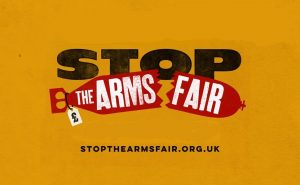Laws often used on demonstrations
Contents
- Stop and Search
- Conditions on a protest
- Section 50 of the Police Reform Act
- If you are arrested
- Obstruction of the Highway
- Aggravated Trespass
- Criminal Damage
- Failing to Comply with Conditions Placed on Protests
- Obstruction of a Police Officer
- Violent Disorder and Affray
The following are laws commonly used on protests.
If you would like a general know your rights briefing, see ‘Know Your Rights’.
Stop and Search
- Section 1 of PACE. The police have to give reasonable grounds to suspect YOU of carrying articles for use for burglary/theft, stolen goods, offensive weapons, bladed articles, items that may be used for criminal damage, or category 4 fireworks.
- Section 23 of the Misuse of Drugs Act. The police have to give you reasonable grounds to suspect you are carrying a controlled drug.
- Section 60 Criminal Justice Act. This is a blanket search power. If a section 60 is in place they can search anyone, but only for weapons or blades
You NEVER have to give any PERSONAL DETAILS when being searched.
The police have to tell you what legal power they’re using and what they’re looking for. The search should be tailored to reflect this.
Say ‘no comment’ to all questions.
Section 60AA is a separate power. If a Section 60AA is in place, the police can require you to remove a mask. They can arrest you if you refuse. They can also confiscate the item.
Conditions on a protest
Section 12 and 14 of the Public Order Act. The police can impose conditions which restrict the place, duration, and the number of people allowed on a static demo, or any reasonable conditions on a procession.
In order to be convicted of an offence under Section 12 or 14, it must be proved that you were aware of the conditions and then chose to break them. A senior officer may make an announcement, or sometimes visual displays or leaflets are used.
Don’t accept or pass on leaflets, make announcements, or tweet about condition under Section 12 or 14, as it is also an offence to organise or incite people to break the conditions and your actions may be misinterpreted as obstructing the police.
Section 35 of the Anti-Social Behaviour, Crime, and Policing Act. This allows officers to force individuals to leave an area for up to 48 hours.
Section 35 has also been used to try and gather people’s details. We know of several instances where refusal of details under Section 35 resulted in arrest. However, in the only instance we know of where people continued withholding information (after over 24 hours on remand) this resulted in a court ruling that those involved were entitled to withhold their information.
Section 50 of the Police Reform Act
If you are suspected of anti-social behaviour, the police can demand your details under Section 50. Refusing to give your details is a criminal offence, and you can be arrested.
This should not be used on protests, according to the police’s own guidance, and we encourage people to resist the use of Section 50 on protests by refusing to give their names.
If you are arrested
Remember the key messages.
- NO COMMENT! We recommend that you don’t talk to the police at all if possible. No friendly chats, on the ground or in a police van, and “No comment” to all questions if you are interviewed after arrest. Talking to the police only helps them to gather information about you and others. A solicitor may sometimes advice you provide a statement. After it’s read, make sure you answer No Comment to all police questions.
- Don’t use the duty solicitor (the one available at the police station). They often give bad advice to protesters. Use one recommended on the bustcard.
- Don’t accept a caution. The police may offer you a caution if they arrest you. This is an admission of guilt and goes on your permanent record. It’s an easy win for the police. At the very least, you should never accept a caution before taking advice from a good solicitor.
Laws often used during direct actions
Although there is guidance on how police forces should police protest, it is not possible to know how the police will react when faced with protesters taking direct action, and the police can arrest you for one thing and then charge you with something completely different. It is worth bearing in mind that people of colour are likely to face greater levels of violence from the police and the state, and this may include being prosecuted for much more serious crimes for having undertaken the same actions as white people.
However, there are some scenarios where there are likely outcomes for people taking action, and the sections below outline these.
Please note that if you are convicted of an offence in court, you will be ordered to pay court costs (to cover some of the cost of the prosecution) as well as any fine you may have to pay.
Obstruction of the Highway
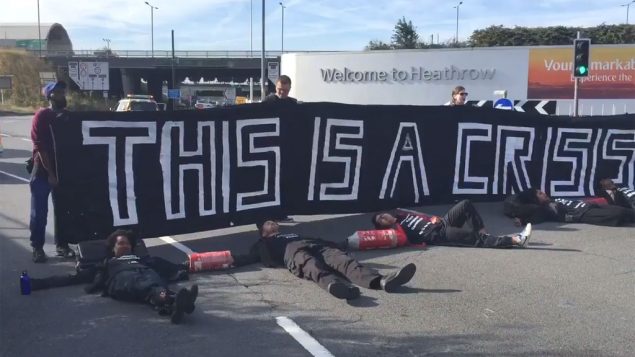
This power is often used to remove demonstrators who are standing outside buildings, sitting down blockading entrances or roads and in many public order situations.
You could be committing this offence if, without lawful authority or excuse, you willfully obstruct the free passage of the highway. The ‘highway’ includes the road, the pavement, grass verges and private property used as a public thoroughfare.
‘Obstruction’ includes anything that prevents passing and re-passing along the highway. You do not have to be blocking the whole width of the highway. The offence is obstructing the highway itself, not other highway users, so it is not necessary for the to prove that anyone was actually obstructed.
The obstruction has to be ‘willful’, so you will often be asked to move by the police, and if you do not, then this could be used as evidence of your ‘willful’ obstruction in court. However, being asked to move and refusing is not a necessary part of this: you can be convicted of obstruction of the highway even if this did not occur.
If convicted, the maximum penalty is a fine of £1000. First time offenders may receive a conditional discharge, or may receive a fine of around £200, but this can vary.
Aggravated Trespass
Trespass
Trespass alone is a matter of civil law, which means that the police have no power to arrest you for it; police may nonetheless help landowners remove trespassers from land.
Trespass is entering – or putting property on – land that belongs to someone else, without their permission.
If you have ‘implied permission’ to enter somewhere – for instance a shop open to members of the public – then you are not committing trespass until you have been asked to leave by the owner of the building or their representative. In a shop this is often a manager, but should not be a police officer. If you fail to do so, then you could be taken to a civil court (‘sued’) by the owner.
Aggravated Trespass
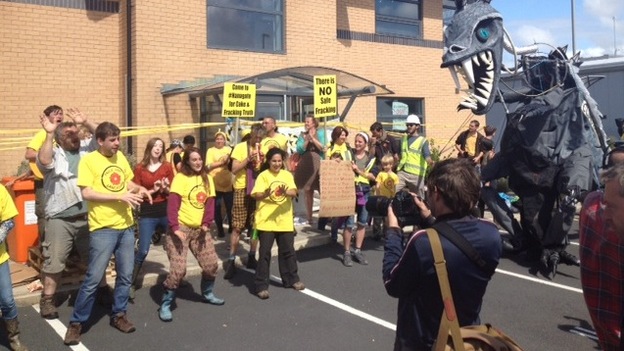
Aggravated trespass is a criminal offence, so you can be arrested for it.
You must be doing two things to commit aggravated trespass:
- Trespassing
- Intentionally obstructing, disrupting, or intimidating others from carrying out ‘lawful activities’.
Further to this, a senior police officer has the power to order any person believed to be involved in aggravated trespass to leave the land; if they refuse to leave after being ordered to by police officer, or if they return to the land in question within a period of three months, this is an additional offence.
Maximum penalty is 3 months imprisonment, or a fine of £2500, or both. First time offenders may receive a conditional discharge, or may get a fine of between £200 – £300. This can vary dramatically – Plane Stupid protesters were threatened with a prison term, even though many were first time offenders, because of the judge’s opinion of the severity of the impact of the action.
Criminal Damage
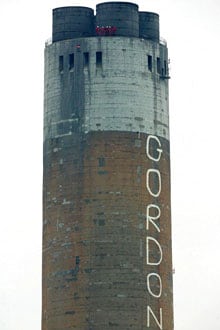
Section 1 of the Criminal Damage Act 1971 covers damage or destruction of property belonging to another person without lawful excuse, as well as the intention to destroy or damage property or ‘recklessness’ with it. The damage does not have to be permanent: this law has been used to convict people who use chalk to write on stone.
Section 2 covers threats to destroy or damage property and Section 3 covers possessing anything (for example, a hacksaw) with intent to destroy or damage property.
The magnitude of the possible penalty, and whether or not you would be tried in the Magistrate or Crown Court, depends on whether the damage is more, or less, than £5000.
Lawful excuse
It is a defence, under Section 5, to show that you had a ‘lawful excuse’ to undertake property damage or destruction and that it is immaterial whether a defendant’s belief in this is justified, as long as it is an honest belief.
This is the “crime to prevent a greater crime” defence. You have to show that the threat you are taking action against is imminent and that your actions are proportionate and necessary. In 2008, six Greenpeace activists who occupied a chimney at Kingsnorth power station in Kent were cleared of charges of criminal damage after successfully arguing that they were legally justified because they were trying to prevent climate change causing greater damage to property around the world
Failing to Comply with Conditions Placed on Protests
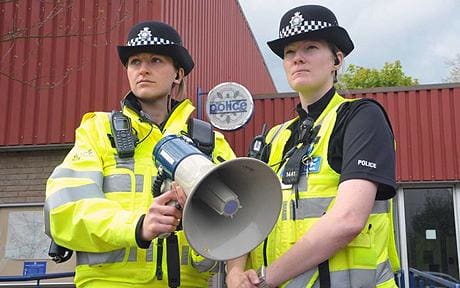
Sections 12 and 14 of the Public Order Act (1986) allow conditions to be imposed on ‘public processions’ and ‘public assemblies’. In order to be shown to have broken these conditions, it has to be proven that you knew what they were.
A ‘public procession’ constitutes any number of people (the law does not specify a minimum) moving along a route.
A ‘public assembly’ is two or more people gathered together in a public place. This includes highways, parks, shopping precincts, shops and offices, restaurants, pubs or any other place to which the public have access or partial access.
Conditions can be set which restrict the place, the duration and the numbers of people allowed. Often, conditions will include setting up a “protest pen” and asking you to move into it. Conditions can be imposed in advance, or by the senior police officer who is at the scene. The law states that conditions can be imposed ‘as they appear necessary to prevent serious disorder, disruption of the life of the community, or intimidation’.
Conditions may be more likely to be imposed if you talk to the police ahead of your action. If you or your group are considering this, please read our guide on notifying the police of actions.
In order to be convicted of an offence under section 12 or 14, it must be proved that you were aware of the conditions and then chose to break them. A senior officer may make an announcement, or sometimes visual displays or leaflets are used.
Do not pass on leaflets, make announcements, or tweet about conditions under Section 12 or 14. This is doing the police’s work for them. It is often very difficult to hear, or comply with, conditions, so by passing on the message you make people liable for conviction under the act.
These laws give the police power to move you, using force if necessary, in order to comply with conditions. Knowingly not complying with the conditions is an offence under the act, and can be grounds for arrest, although it is a defence to prove that the failure to comply arose from circumstances out of your control.
If convicted, the maximum penalty is a fine of £1000. First time offenders would be likely to receive a fine of about £200.
Obstruction of a Police Officer
The threat to arrest for obstruction is widely used by the police at demonstrations.
Under the Police Act 1996 s89 it is an offence to assault, resist or wilfully obstruct a constable in the execution of his/her duty.
Willful obstruction of a police officer means doing any act which makes it more difficult for the officer to carry out their lawful duty e.g. stopping them doing something, de-arresting someone, deliberately misleading them, or giving a false name and/or address (please note that some people have more than one name, or a different name on some documents to others. Remember: No Comment, No Personal Details, but in this instance, your name is not a ‘false name’).
Being limp makes it more difficult for a police officer to move you, and is not obstruction.
Violent Disorder and Affray
These public order offences are very serious. Anecdotal evidence suggests that people of colour are likely to be disproportionately targeted for arrest and prosecution for these violent offences.
Violent Disorder (section 2 POA) is committed where 3 or more persons together, use or threaten unlawful violence that taken together could “cause a person of reasonable firmness to fear for their safety”. The person does not have to be present.
The 3 people involved do not need to co-operate with each other they just need to be present in the same area at the time the offence is committed.
The maximum penalty is 5 years in prison and/or an unlimited fine.
Affray (section 3 POA) is the equivalent (of Violent Disorder) when one person is acting alone. The conduct must be in excess of mere words. An assault on a single person would be unlikely to fall under this statute.
The maximum penalty is 3 years in prison and/or a fine.
If you wish to have a secure phone call or face to face chat about the potential consequences of taking certain hypothetical actions, call GBC on 07946 541511.
For more information on what happens if you are arrested, see this GBC information.
If you have witnessed an arrest, please call GBC on 07946 541511. More information here.


